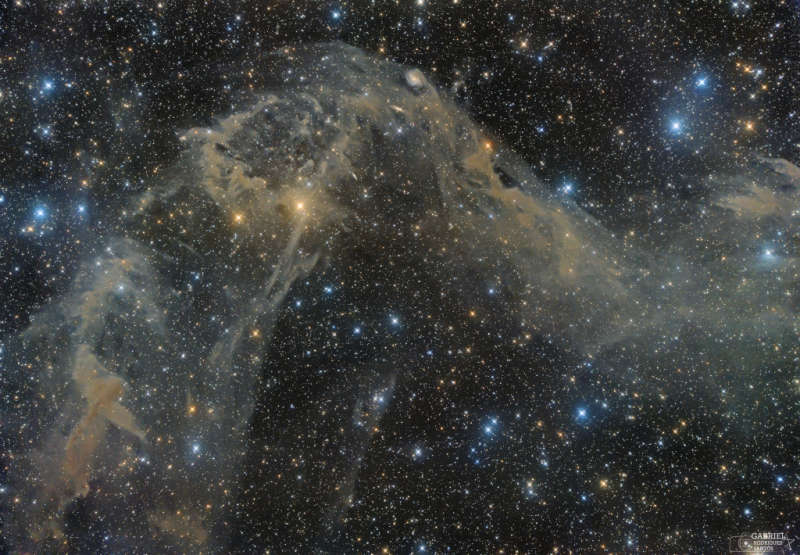
|
Credit & Copyright: Gabriel Rodrigues Santos
Explanation:
The combined light of
stars
along the Milky Way
are reflected by these cosmic dust clouds that soar
300 light-years or so above the plane of our galaxy.
Known to some as integrated flux nebulae and
commonly
found
at high galactic latitudes, the dusty
galactic cirrus
clouds are faint.
But they can be traced over large regions of the sky
toward the North and South Galactic poles.
Along with the reflection of starlight, studies indicate
the dust clouds produce a
faint reddish luminescence
as interstellar
dust grains
convert invisible ultraviolet radiation to visible red light.
Also capturing nearby Milky Way stars and
distant background galaxies,
this remarkably deep, wide-field image
explores a complex of faint galactic cirrus known as Mandel Wilson 9.
It spans over three degrees across planet Earth's skies toward
the far southern constellation Apus.
|
January February March April May June July August September October November December |
| |||||||||||||||||||||||||||||||||||||||||||||||||||||||
NASA Web Site Statements, Warnings, and Disclaimers
NASA Official: Jay Norris. Specific rights apply.
A service of: LHEA at NASA / GSFC
& Michigan Tech. U.
Based on Astronomy Picture
Of the Day
Publications with keywords: dust cloud
Publications with words: dust cloud
See also:
